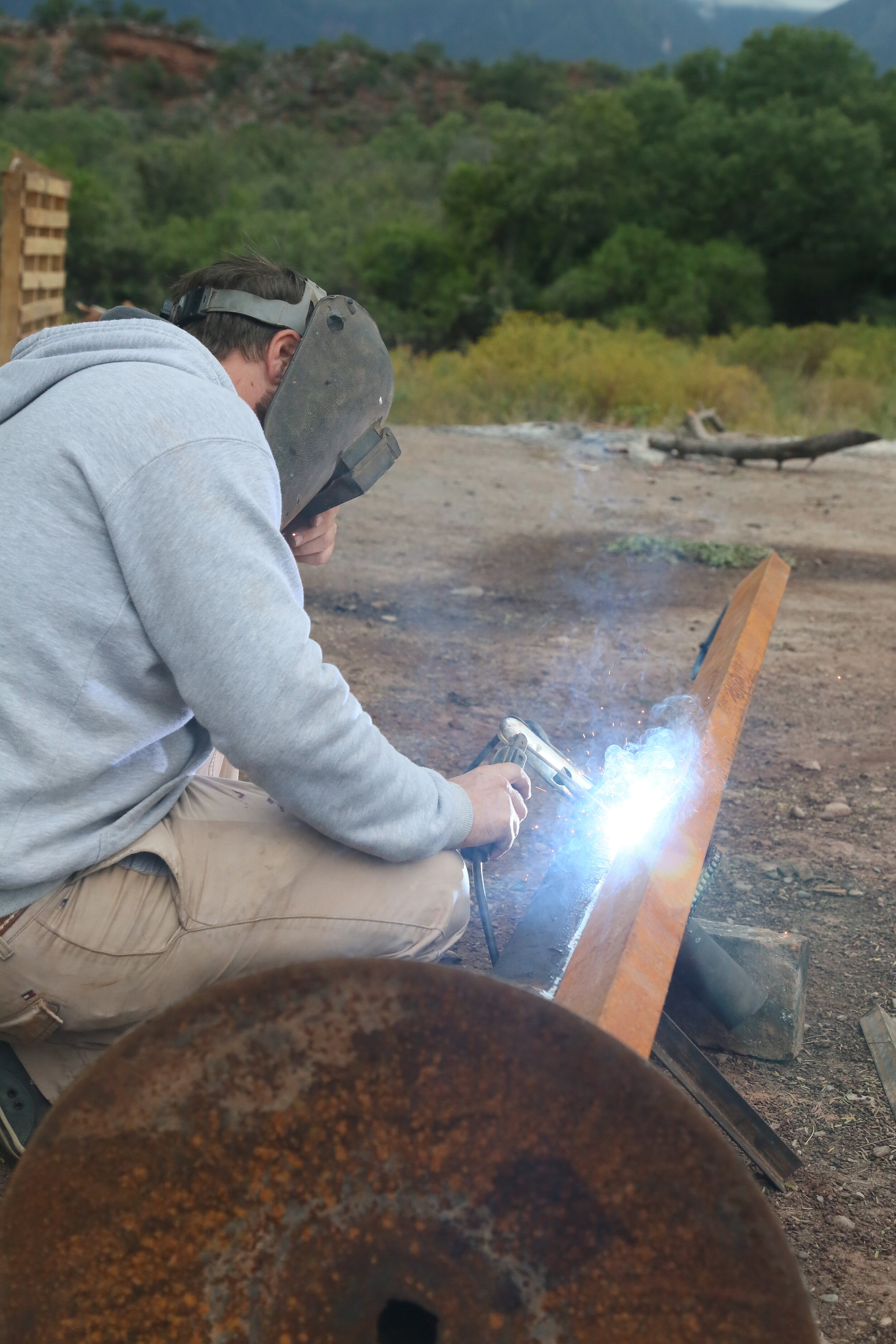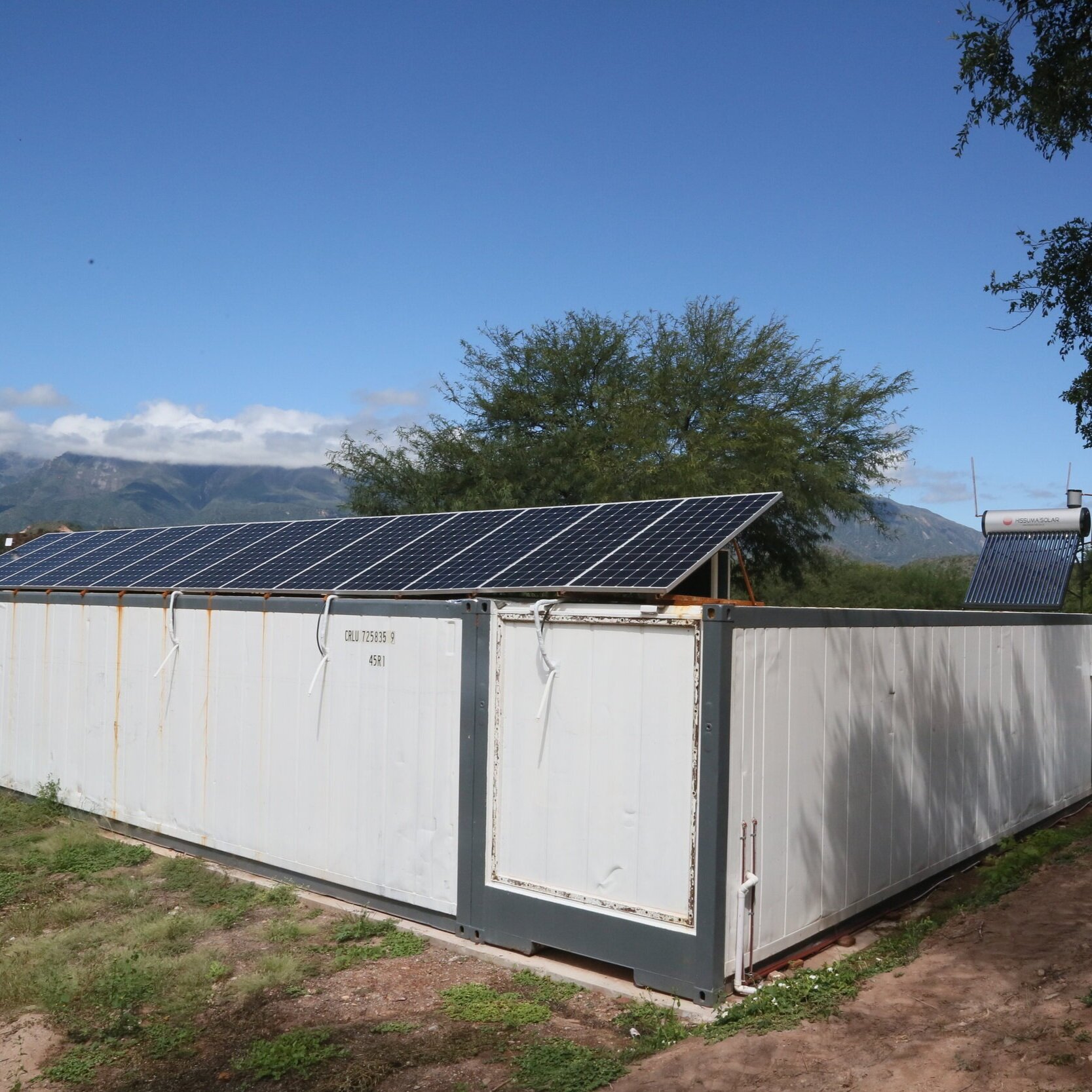How Condor Valley Built South America's First Solar Winery
From the moment our stewardship of Condor Valley was established, preserving this expanse of land and its rich cultural history has been our founding priority. These principles of conservation have also been at the heart of our winemaking from the get-go. How can we skillfully craft flavorful wine using the richness of this land and in harmony with it?
After two years of successful grape harvests in our newly built Condor Valley Vineyards, we wanted to bring wine production into the valley, making it both self-sustaining and off the grid.
In October 2019, we broke ground on what was to be South America’s first fully solar-powered winery.
Now, there isn’t exactly a blueprint to build a solar-powered winery - much less in a location as remote as we are. So we had to figure out how this could be done with limited resources, minimal waste, and in time for the upcoming harvest in February of 2020.
Just as he did the grapes, our lead wine maker Bruno Pekarek went into research mode. And soon, found a converted shipping container modular system. They are relatively inexpensive, sturdy, and can be quickly converted to fit one’s specific needs. They do have some serious challenges too, as you’ll soon find out…
Building the Winery’s Structure
First thing first. We created a design based on the minimum space we would require to produce 20,000 liters of wine each year. Once the we had the design, we had to lay the actual cement foundation.
Keep in mind - everything in Condor Valley has to be transported in. The nearest city is 3 hours away. There is no local hardware store and supplies have to be sourced from a variety of shops. Specialty workers were trucked in to stay in Condor Valley, where they camped out during the build process. Without electricity or much heavy machinery, most of what did had to be done by hand.
To level out the area for the foundation, we used our 1947 Tracotre de Victuri, an Italian caterpillar that Bruno had repaired. We then lay a foundation of gravel. It took three weeks for metal workers to then anneal, bend, and assemble the metal framework for the foundation and embed water and drainage into the new building. And a final three days to mix and pour all of the cement for the 35cm-deep foundation for our winery.
A fun aside: the gravel used for the foundation had to be brought to Condor Valley Estate in large trucks, requiring ten full truck loads. At the prompt of the supplier, we partly paid for the gravel with with nine sheep from our farm on El Tipal.
In the meantime, three large trucks were making their way over the Andes from Chile with three 40-foot containers to be converted into the building itself. These containers had many bonuses, like:
Repurposing shipping containers that often lay to waste
Less expensive than other building materials
Adaptable and provide ample working material. Even after using pieces to build interior walls, we are still using metal we carved out of the interior for a variety of things around the estate
But they also had quite a number of challenges to navigate:
Finding shipping companies to transport these large loads and then convincing the drivers to actually take them down the windy dirt roads to the site (spoiler: we invited them for an asado and wine on the day they arrived and the next morning, they all agreed to make the final leg of the journey)
Positioning the containers. Pro Tip: make sure the crane you get is big enough to support the loads! We had to shift and position these largely by hand.
Cutting open the walls of the container using flex machines was a serious feat – we went through 290 cutting disks as shipping container wall consists of two stainless steel layers with heavy metal bars in between to create strength needed to sustain the shipments.
To prepare the shipping containers for interior use and climate control required for a functioning winery, we did a few things:
Lay a 10cm cement floor to provide a level surface that allowed us to move wine tanks around and was easy to clean.
Added a layer of insulated wall to hold cool air in. On a really hot day, we can close all the doors and there will only be about 3 degrees Celsius difference without any electricity used to further cool the space. To do this, the rooms were professionally sealed with foam insulate and then a stainless-steel layer was added on top, making the whole thing like an insulated cube.
Installed three electric inverter air conditioning wall units. These are key for maintaining control - particularly vital during the fermentation process. We are able to change the temperature quickly as the wine develops and we can ensure that temperature is maintained.
We also have an air extractor that is connected to a methane gas detector that will kick on if needed.
Making the Winery Solar
As we had recently installed solar panels at our guest lodges, we reached back out to the solar engineer to help us with making a solar winery. He helped us plan out what would work in conjunction with solar panels, from the positioning of the winery to ensure maximum sun exposure down to the wiring. He also gave us instructions to ensure other aspects of the construction would fit with the panels. We ended up with 21 panels lined in two rows facing northeast toward the valley canyon.
To further maximize the electrical efficiency of the solar panels, all the electrical equipment we use is through an 10,000-watt inverter system, so that the electrical intake is as slow as possible and power is conserved. This system functions by slowly taking out energy and when it has enough, it levels out. Without such a system, electrical units would have usage peaks that suck up a ton of power and would quickly drain the batteries.
Having it all Come Together
Community was key to achieving building our solar winery in a remote valley. We cashed in on quite a few friendly favors and were truly supported in this effort by our community - one that grew with each worker who traveled here to share their skill set. We are incredibly grateful to our team, friends, and contractors who have helped us along the way.
From the truckers’ asado to the sheep exchange rate - it was certainly an ever unfolding endeavor.
Much like the seed to grape to wine glass journey of creating the first vineyard in this valley - our lead wine maker, Bruno Pekarek, has taken a truly crafty path on leading this build. Under his guidance, we finished the inaugural pressing at the new solar winery on April 1, 2020.
We look forward to welcoming guests to Condor Valley Estate & Winery to savor the fruits of our labor.
Read on for what happened when COVID-19 Pandemic Shut Down Argentina During Wine Harvest.





